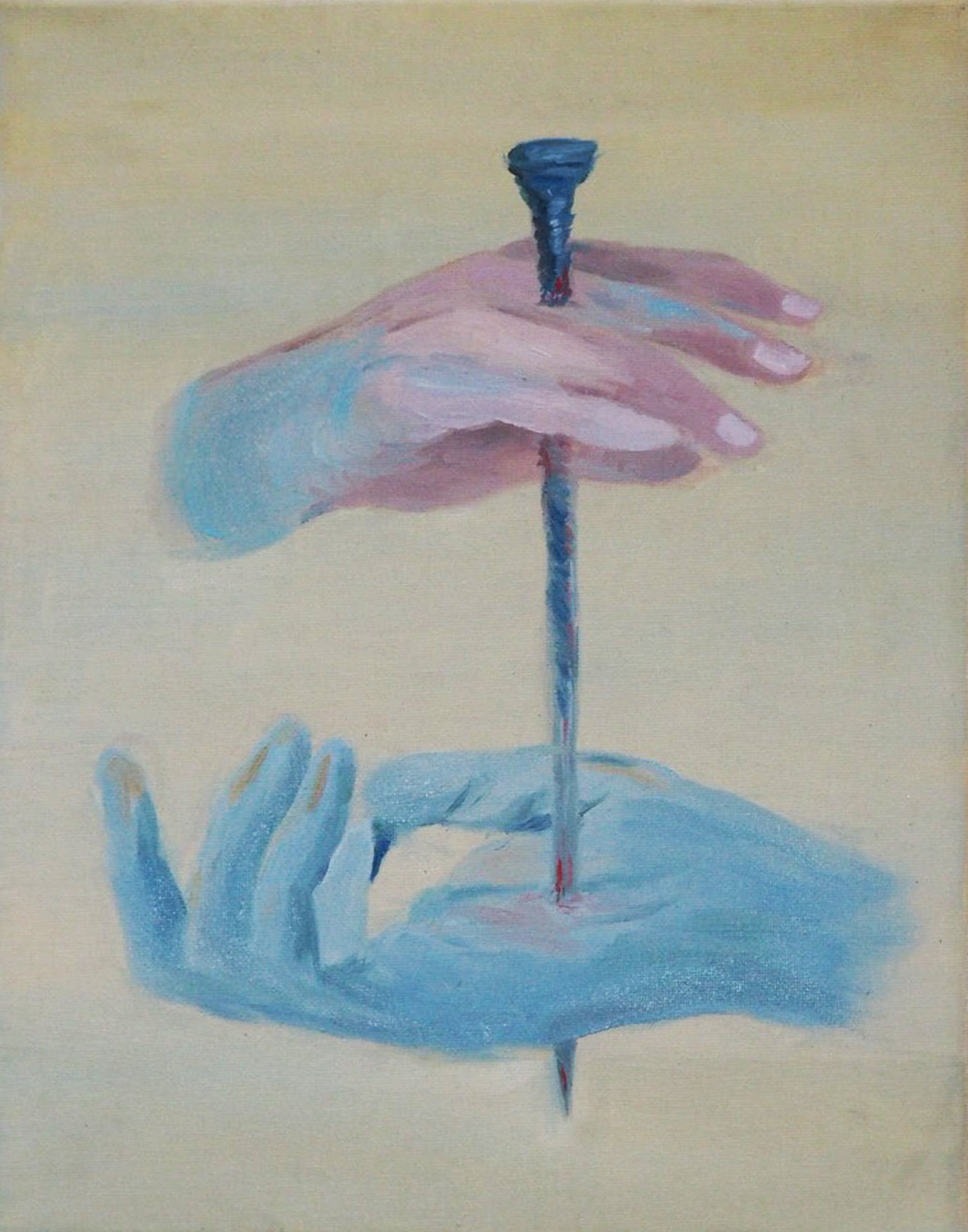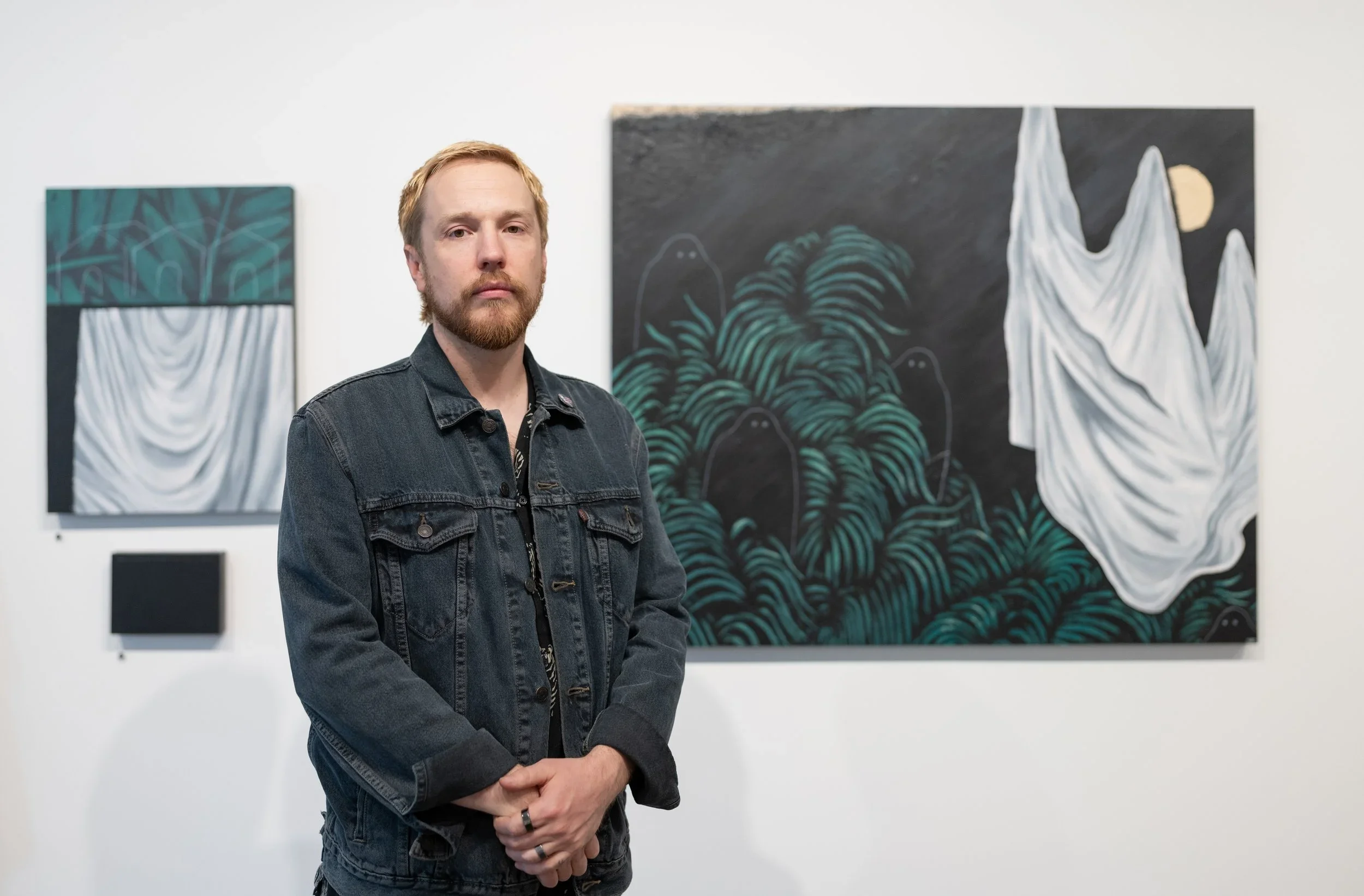10 Questions with Xinyu Yu
Xinyu is an artist and designer whose work harmonises the introspective poetics of Eastern traditions with the dynamic innovation of Western contemporary art.
Born and raised in China, she began her artistic journey with a disciplined foundation in ink painting, watercolour, and oil, cultivating a balance between technical precision and emotional depth. Her studies at Pratt Institute in Interior Design and the University of Pennsylvania in Sustainable Design further enriched her perspective, merging the tangible dimensions of design with the transcendent qualities of fine art.
Now based in Phoenix, Arizona, Xinyu continues to explore creative possibilities, drawing inspiration from the diverse landscapes and cultural influences that shape her artistic vision.
Xinyu Yu - Portrait
ARTIST STATEMENT
“Emotions live in all things-not just flesh. A lingering trace, a subtle shift, the quiet weight of emptiness. We forget how the world whispers back.
Xinyu's work listens. It follows the unspoken dialogue between presence and absence, uncovering the pulse of yearning in what others dismiss as inert. To paint is to translate-to give voice to unseen sorrow, quiet elation, and trembling stillness.
Nothing is truly still. Nothing is truly silent. We are all in conversation.”
— Xinyu Yu
Will, Oil paint, 10x8 in, 2024 © Xinyu Yu
INTERVIEW
Can you tell us about how your artistic journey began in China and what first inspired you to start painting?
In China, there is a long-standing tradition that girls should master refined arts such as piano, chess, calligraphy, and painting. My parents are both teachers and architects, and they naturally wanted to nurture me in these areas.
When it became clear that piano wasn't my strength, my mother enrolled me in a children's art class at the age of five. This marked the start of my artistic journey. I vividly remember using oil pastels and watercolour pens for my first creations. One memorable moment was when the teacher played jazz music and asked us to "paint" what we heard. It was then I realized that art could express not just the visible but also the invisible—thoughts, emotions, and sensations.
Painting soon became my way of communicating what words couldn't. From traditional Chinese ink painting to watercolour and sketching, I explored various mediums throughout my school years, each opening a new perspective. By middle school, I earned the top art score in my hometown, securing a spot at a prestigious high school.
For over two decades, art has been more than a passion—it's a core part of who I am, offering a means to understand and express both the world around me and the one within.
Afternoon, Watercolor&pencil, 12x12 in, 2019 © Xinyu Yu
How have your studies in interior and sustainable design influenced the way you approach your art today?
My four years studying interior design at Pratt Institute and my research in sustainable design at UPenn have reshaped how I observe the world, sharpening my sensitivity to the vitality in "small things."
Early courses on light and colour taught me to capture the "emotional shifts" of light in space. For instance, the highlight on a coffee cup's rim can suggest the humidity of dawn, or subway reflections might form accidental abstract compositions. These lessons shifted my focus from complete scenes to the narrative power of details—like emphasizing the faded book spines or cracked wood textures in an old bookstore, turning them into layers of memory.
At UPenn, I developed a "gentle archaeological perspective." When I draw a chipped chair or a worn handrail, I consider the life cycles of materials—the tree rings in the wood, the chemical makeup of paint, and the oxidation from countless touches. This has given me a "material morality," where natural marks intrigue me more than deliberate patterns. To capture this, I use techniques like layering peacock blue and translucent ochre in watercolours to reflect time's patina.
From southern China to New York to Philadelphia, I've come to see sustainability as more than eco-materials or energy savings. It's about preserving overlooked traces of daily life. In today's disposable world, can painting act as a "visual seed bank," preserving the fading material languages and light codes of our time?
You've worked with ink, watercolour, and oil. Do you have a favourite medium to work with, and why?
Rather than favouring a specific medium, I am more fascinated by the dialogue between different materials—it's like a carefully orchestrated chemical experiment, where each medium has its own unique "personality" and "temperament."
The breathing quality of ink captivates me (it feels alive, pulsing on rice paper as it spreads), while watercolour's transparency captures fleeting slices of light and shadow. Oil paint, with its dense texture, holds the weight of time. However, I'm not content with adhering to their traditional uses—I'm always exploring how to break the conventional boundaries of each medium. For instance, why should watercolour only depict landscapes? I use it to portray the industrial reflections of steel in urban corners or the artificial hues of a convenience store freezer.
Recently, I've been delving into breaking the boundaries between materials. For example, I outlined a building's skeleton with ink and suddenly splash neon reflections in watercolor across it. Or, within the cracks of thickly layered oil paint, I hid a delicate trace of ink wash. This "polyphonic chorus of materials" feels closer to my experience of urban life—simultaneously ancient and new, orderly yet full of surprises. Each creation becomes a rediscovery of what materials can do.
Whispers in the Weave, Watercolor&pencil, 12x12 in, 2019 © Xinyu Yu
Grain, Watercolor&pencil, 16x11 in, 2019 © Xinyu Yu
What does your creative process look like? Do you start with a clear idea or let the work guide you?
My creative process feels like a carefully orchestrated improvisation—while the script is written before the show begins, the performers (my brushes and paints) often bring unexpected brilliance.
I usually start with a clear theme, such as "the loneliness of industrial cities" or "the traces of time on objects." These themes often stem from moments in daily life that strike me unexpectedly—perhaps the interplay of rain and light on glass or the serendipity of a dictionary at a secondhand stall opened to a specific page.
However, when I begin creating, I trust my instincts entirely. For example, when painting The Inner Bathroom, I originally planned to use calm gray tones. But midway through, I suddenly felt the urge to introduce a burst of unplanned passion, which resulted in the vibrant red of the billowing curtain. This "unplanned honesty" often breathes life into the work, making it feel more alive.
How do you bring together traditional Eastern techniques and Western contemporary ideas in your work?
Traditional Eastern techniques, like the "philosophy of empty space" in ink painting and the detailed meditation of gongbi, gave me a strong foundation. They taught me to sense a painting's rhythm before even starting. The real challenge is blending these ancient methods with contemporary visual language.
In my New Scenery series, for example, I use traditional ink to create mountain textures, then splash acrylics and collage in unexpected ways. From a distance, it looks like a classic landscape, but up close, subway maps and steel details emerge—highlighting how urbanization rewrites memory.
I'm drawn to the tension between materials: the softness of rice paper against the boldness of acrylics or delicate Song Dynasty composition meeting street-art collage. It's a cultural dialogue that goes beyond simply mixing East and West, focusing instead on discovering common, inspiring elements between them.
Mechanical Bonds I, Oil paint, 11x14 in, 2024 © Xinyu Yu
Mechanical Bonds II, Oil paint, 8x10 in, 2025 © Xinyu Yu
Your artist statement speaks about silence, emotion, and presence. What kind of feelings or thoughts do you hope people experience when they see your art?
I want viewers to feel a subtle "complicity" with my work—not just absorbing my emotions, but being quietly invited to awaken their own memories and associations. At first, they may be drawn to familiar still-life scenes and calm compositions. But looking closer at thick paint layers, hidden brushstrokes, or collage fragments, more complex feelings emerge—childhood memories, modern exhaustion, or environmental ideas. This openness is what I aim for.
I seek to create an "emotional mirror," reflecting life's tension: calm on the surface, but stories flowing underneath. Viewers don't take my conclusion, but a fresh look at their own lives.
You mention that "nothing is truly still or silent." How does this idea influence your painting style and subject matter?
My work is always an exploration of the "unseen dialogues" happening between seemingly still objects—silent exchanges of energy such as light, emotion, and hidden magnetic fields.
A single static object may be motionless, but when multiple still objects appear together, they weave a network of interaction. The emotions I express are themselves dynamic.
Are there any upcoming exhibitions or projects you're excited to share?
As I mentioned earlier, I am currently working on a new series titled New Scenery, which pushes the boundaries of my artistic exploration by combining styles and media I've never attempted before. This series represents a bold step in my creative journey, and I am excited to unveil it to the world soon.
My work has been featured in several highly regarded exhibitions across the US, including the KBM Art Gallery Exhibition Warm Colors, the 58th issue of Artistonish Magazine, and the 2nd Annual Tranquillum 2025 International Juried Exhibition. These opportunities have allowed me to connect with a diverse audience and affirm my place in thecontemporary art scene.
One of my most notable achievements was winning the 14th Abstract Competition hosted by Teravarna Art Gallery, where I emerged as the top artist among 335 participants from 45 countries. This recognition is a testament to my dedication and unique artistic vision, which set me apart on an international stage.
Looking ahead, I am eager to further expand my reach through exciting upcoming exhibitions, including one at the BWAC Gallery in New York and another at the Naturalist Gallery. Additionally, I am enthusiastic about future collaborations with European galleries, where I hope to continue showcasing my distinctive approach to art and storytelling. These milestones reinforce my commitment to artistic excellence and my ambition to create work that resonates universally.
Specimen No. 2417, Color pencil, 8x5 in, 2023 © Xinyu Yu
Looking ahead, is there something new, like a medium, theme, or collaboration, you would like to explore?
Yes, I've been experimenting with new techniques recently. Lately, I've been working more on rice paper and Japanese washi paper—they are very thin and delicate. On these surfaces, I apply heavier acrylic and oil paints to see what interesting contrasts and effects can emerge. This exploration has opened new dimensions in texture and contrast within my work.
Lastly, where do you see yourself and your work in five years from now?
Besides continuing my work as an interior designer on more exciting architectural projects, I will keep exploring and pushing my boundaries in painting and artistic creation. I hope my concept of "unseen dialogue" will reach and resonate with more people, allowing them to see and "listen" in new ways. I plan to participate in more exhibitions across Europe and North America. I'm also fortunate to have lots of artist friends with unique styles, and we're looking forward to collaborating on joint exhibitions when opportunities arise. Overall, I'm very excited about the future—every day brings something new.
Artist’s Talk
Al-Tiba9 Interviews is a promotional platform for artists to articulate their vision and engage them with our diverse readership through a published art dialogue. The artists are interviewed by Mohamed Benhadj, the founder & curator of Al-Tiba9, to highlight their artistic careers and introduce them to the international contemporary art scene across our vast network of museums, galleries, art professionals, art dealers, collectors, and art lovers across the globe.






















